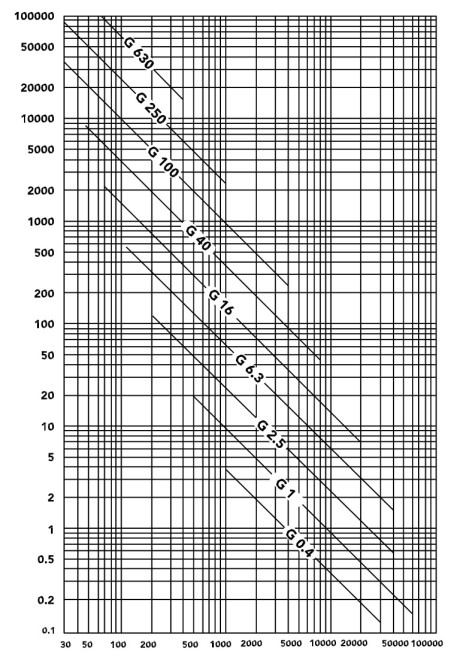ISO21940
| BALANCE QUALITY GRADE G |
MAGNITUDE e per Ω mm/s |
MACHINERY TYPES – GENERAL EXAMPLES |
| G 4000 | ≤4000 |
|
| G 1600 | ≤1600 |
|
| G 630 | ≤630 |
|
| G 250 | ≤250 |
|
| G 100 | ≤100 |
|
| G 40 | ≤40 |
|
| G 16 | ≤16 |
|
| G 6.3 | ≤6.3 |
|
| G 2.5 | ≤2.5 |
|
| G 1 | ≤1 |
|
| G 0.4 | ≤0.4 |
|
| NOTE 1 Typically, completely assembled rotors are classified here. Depending on the particular application, the next higher or lower grade may be used instead. For components, see clause 9. NOTE 2 All items are rotating if not otherwise mentioned (reciprocating) or self-evident (e.g. crankshaft drives). NOTE 3 For some additional information on the chosen balance quality grade, see Figure 2 which contains generally used areas (service speed and balance quality grade G) based on common experience. NOTE 4 For some machines, specific International Standards stating unbalance tolerances exist. NOTE 5 The selection of a balance quality grade G for a machine type requires due consideration of the expected duty of the rotor when installed in situ which typically reduces the grade to a lower level if lower vibration magnitudes are required in service. NOTE 6 The shaft height of a machine without feet, or a machine with raised feet, or any vertical machine, is to be taken as the shaft height of a machine in the same basic frame, but of the horizontal shaft foot-mounting type. When the frame is unknown, half of the machine diameter should be used. |
||

